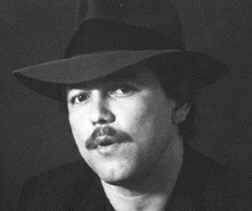
Furthermore, Blades' attempt to replace some words with Buenos Aires idioms, but leaving many others that are not commonly used around the River Plate, ends up becoming a linguistic hodgepodge for Spanish speakers. A case in point is the version of Blades' signature song, "Pedro Navaja," which is simply too iconic to be transplanted to a new locale, and its structure, with really long lyrics, no choruses, and a call-and-response section, does not easily fit the succinct tango mold. Accordingly, the album's main revelation is to realize how naturally some of Blades' characters adjust to the new setting, particularly the portraits of long-lost women of "Paula C" and "Ella." With uptempo numbers or songs deeply rooted in their original sociocultural environment, things become more problematic. It should be clear that for Blades, as for any real tango connoisseur, the appeal of this music has very little to do with sexy dancing for tourists and a lot with tales of urban squalor and overall existential misery. Blades revealed that one of the main reasons behind this project was that he often felt his lyrics "were shortchanged by the salsa format," meaning that the sadness and melancholy of his stories were buried under all those horns and percussion. Everything is exquisitely crafted, but the final outcome is motley. The Prague Symphony Orchestra and the Leopoldo Federico Orchestra, a world-class tango ensemble comprising four bandoneons, five violins, cello, double bass, and piano, are called in to provide the required instrumental textures. Blades surrounded himself with a superb cast of collaborators, first and foremost Argentine arranger and composer Carlos Franzetti, with whom he had worked assiduously in the past but who, curiously, is more of a jazz than a tango specialist.

On the other hand, it is almost shocking to realize that, instead of putting his own spin on a set of standards as most singers do, perhaps complemented with a few new songs written especially for the occasion, Blades chose to rework 11 of his classic salsa compositions into the tango idiom. After all, many singers (Latin and not) before Blades have done it, as the tango has always been a source of bewitchment for musicians, dancers, and audiences worldwide. The release of a tango album by salsa legend Rubén Blades is not as surprising as it sounds.


 0 kommentar(er)
0 kommentar(er)
